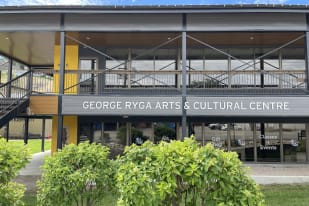A Glimpse into the Past: The Legacy of the Summerland Ornamental Gardens

The Story
The history of the Summerland Ornamental Gardens is as rich as the soil that nurtures its plants. It was originally designed to showcase effective farming and gardening in the dry climate of the Okanagan. In early 1916, gardeners Joseph Smith and Alfred Aveson began designing the Summerland Ornamental Gardens. According to local lore, their only blueprint was a Wedgwood plate featuring an English garden scene, which they used as a scaled-up guide to shape the newly plowed land. The Gardens soon became a hub for the community, hosting annual farm picnics where families gathered to learn about landscaping and home beautification. Adults attended workshops on topics like food preparation and canning, while children played games on the expansive lawns. The day would culminate in a picnic for everyone, with as many as four thousand people attending these events. Over time, as the plants grew, the Gardens became a popular location for weddings and receptions.
Joself and Alfred introduced a variety of trees and shrubs from across the globe. Although not all survived, many continue to provide shade today. Today, the Gardens are home to about 135 species of mature ornamental trees and shrubs, continuing to be a cherished space for community events and celebrations.

Houses and buildings such as machine shops, barns and silos were built to accommodate the gardens manager, the superintendent, and other farm employees. Today only the superintendent’s home and some remnants like sets of concrete steps stand as historical markers of the past.

The residence for the Superintendent of the Research Centre's home that still stands today was constructed between 1924 and 1926. Although it has not been a home to anyone since the 1960s, it found new life first as an office and later as a museum, before it was eventually closed to the public.
Horticulture Significance
The horticultural significance of the gardens is profound. Under the guidance of innovative managers like Nat May, who led the gardens from the 1920s through the 1950s, the team developed new varieties of geraniums, dahlias, and other plants that garnered recognition across the country. Today, Nat May’s legacy is continued through the efforts of his granddaughter, Connie Davis, who coordinates a dedicated group of volunteers ensuring the gardens remain an influence of community and botanical innovation.
As the 20th century saw a shift from rural to urban living, the fate of the gardens hung in balance when Agriculture Canada began to phase out its horticultural programs. In a pivotal moment, Lorin Godfrey, the then director of the now-renamed Research Centre, alongside gardens manager Brian Stretch, championed the cause to preserve this green space. Their advocacy led to the creation of the Friends of the Summerland Ornamental Gardens (FOG) in 1991, a non-profit society dedicated to maintaining and enhancing this historic site. Under their stewardship, the gardens have not only survived but thrived, adapting to contemporary environmental needs with initiatives like the establishment of a Xeriscape demonstration garden, emphasizing water conservation and supporting local pollinators.
Today

The Summerland Ornamental Gardens stand today as a perfect example to the resilience and enduring charm of nature intertwined with community spirit. It continues to be a place where history is preserved and the future of sustainable gardening is cultivated. Today, the spirit of the gardens is kept alive by the dedication of approximately fifty weekly volunteers. These individuals not only tend the gardens but also organize plant sales, manage events, produce newsletters, and handle various other tasks beyond gardening. In 2016, the Friends of the Gardens marked a significant milestone—the centennial celebration of the Summerland Ornamental Gardens, commemorating a century of growth, community, and natural beauty.




